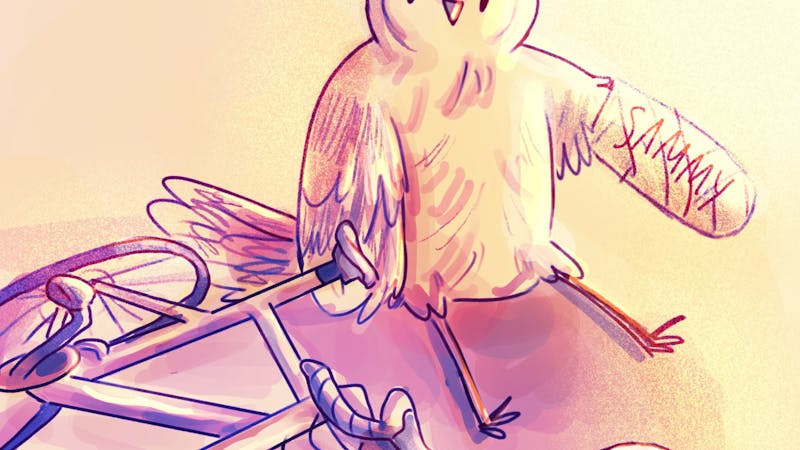Do it yourself: Students talk designing area majors

Any prospective student flipping through Rice’s major offerings would miss Computer Science and the Arts — probably because it’s not listed. This specific program is an area major, a type of unique student-designed major made by students looking to forge their own curriculum. Bria Weisz said she created the Computer Science and the Arts major upon finding out that the curricula lacked adequate flexibility for her intended double majors, computer science and visual and dramatic arts.
“I wanted the flexibility to take different classes and branch out,” Weisz, a Brown College senior, said. “I decided I wanted to make [Rice] work for me.”
One of the main benefits of an area major, Weisz said, is the flexibility it affords students. In her case, it allowed her to combine two very disparate majors into one more streamlined program, focusing on the aspects which interest her most.
Alison Maniace, an area major studying Bioethics and Biotechnology, echoed this sentiment, saying that her area major allowed her academic career to make space for her developing interests.
“What I appreciate about my area major most is that it accommodated [the way that] my interests solidified in the later portion of my time at Rice and let me adapt my education to that,” Maniace, a Martel College senior, said.
In order to pursue an area major, minor or certificate, Weisz said a student must gather tenured faculty advisors and then make a proposal to the Committee on the Undergraduate Curriculum.
Jeffrey Fleisher, the chair of the CUC, said he typically meets with four or five prospective area majors a year, although generally only one or two students actually complete the area major proposal process.
“What I tend to do with students who are thinking about an area major is ask them a lot of questions,” Fleisher said. “What are the things that interest them at Rice and why don’t those majors work?”
According to Fleisher, few students pursue area majors — in fact, Weisz and Maniace are currently the only two at Rice. Weisz attributes this to a lack of common knowledge about the possibility of designing your own major. According to her, the concept was novel even to many of the professors she met with.
“Most of the professors [who] I talked to kind of had the same reaction as many of the students, like ‘Oh, that’s really cool, I don’t know many people who are doing that,’” Weisz said.
Fleisher said that another reason that area majors are rare is that the proposed course materials are already offered by other aspects of the Rice curriculum.
“It’s going to be a lot of work to create a new major, and if you can achieve the same thing through the curricular structures we have, you should do that,” Fleisher said.
According to Maniace, another possible pitfall of proposing an area major is course timing. Departments offering institutional majors can structure core courses so that they are offered most semesters, whereas courses necessary for area majors are more likely to conflict with each other.
“There is less of a guarantee that courses will be offered [or] won't overlap with each other as with an institutional major,” Maniace said.
Fleisher emphasized that creating an area major is a difficult process for students.
“We’re asking students to create a piece of curriculum that is normally created by a whole department of faculty,” Fleisher said. “It's actually very challenging for students to propose a new piece of curriculum [that is] tailored to themselves.”
In the best cases, however, area majors can forge a new path and even give the Rice faculty ideas for new programs.
“The best area majors are ones that … actually help Rice think about what future interdisciplinary majors or new majors could look like,” Fleisher said. “Sometimes [area majors] point the way forward for creating a new interdisciplinary major … Our curriculum grows and changes, so sometimes students do point us to places where maybe there’s a deficit.”
More from The Rice Thresher

New student center to ‘complete’ central quad
Breezeways, arches and outdoor seating will abound at the Moody Center Complex for Student Life set to break ground May 8. The 75,000-square-foot complex was designed by architecture firm Olson Kundig and has an expected completion date of fall 2027.

Best study snacks to fuel your finals
Finals are creeping up on us, and that means hunting season for the best study snacks on and off campus. Below are some that are sure to see you through the most enigmatic paper prompts and puzzling practice questions.

Head over handlebars: a brief history of Beer Bike accidents
In the first heat of the women’s race in this year’s Beer Bike, Melissa Geng said she was biking faster than she ever had, adrenaline pumping through her veins. All was going well, until she crashed into the fence of the alumni viewing area at the turn of her second lap.

Please note All comments are eligible for publication by The Rice Thresher.